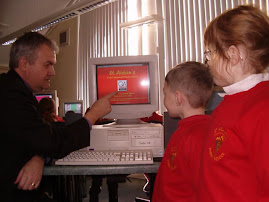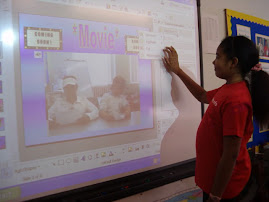Q-1: Reflect on your readings and experiences of usingtechnology. Did you notice any instances of gender divide in the use of technology? Share at least one example and reflect on the reasons.
The digital divide between genders has been increasingly recognized as a very real problem affecting social interactions at many levels. There exist disparities between the sexes in technology use in childhood, resulting in reluctance in women to study and pursue careers in technology. In the male-dominated technology industry, the gap will only widen if concrete solutions are not implemented to encourage girls to use computing technology from a young age. The root of the recent decline in females graduating from college with computer science degrees and the even fewer women who pursue engineering related careers stems largely from a difference in the psychology of the genders and a male-industry catering to a software market dominated by males. Studies have demonstrated that the play patterns of boys and girls diverge at a relatively early age. Girls typically prefer creating a sense of creating community through social interactions with other girls, which, in psychological terms, translates to technology careers involving product conceptualization. On the other hand, boys enjoy competitive and repetitive shooting games and games that keep some sort of scoring record. This has been suggested to be indicative of the methodology required for software development and programming.
Q-2: Can you suggest some ways to reduce the gender divide in accessing technology?
The application of the technology and who uses it make ICT extremely gendered. However, in reality, gender issues are not holistically addressed in the application of ICT. The way ICT is applied today has largely been an extension of our socialization – an extension of the provision of basic services and an extension of our efforts to promote efficiency, productivity and cost-effectiveness. Generally, the way ICT is applied today has little to do with the appreciation of the individual and the richness in diversity s/he brings to a society and the multiple identities and roles that the individual plays within that society.
In the context of ICT, it is necessary to consider how ICT impact women’s multiple roles and examine changes brought about by the new information and communication society on women’s and men’s gendered roles. Gender role analysis is useful to understanding to what ends women and men utilize ICT (i.e. reproductive tasks associated with educating children, productive tasks associated with work, and community tasks associated with volunteerism), whether use of ICT is time-saving, and whether women’s and men’s use of time is different (i.e. does one sex have greater leisure or does increased time flexibility create the potential for more ‘double shift’ as telecommuting blurs distinctions between private (home) and public (work) domains).
In terms of ICT use and impacts, examining gender roles may lead to greater understanding of the differences between women and men in ICT use and impacts. For example:
• In a given community, do women and men, girls and boys, participate equally in the use of Internet facilities at a library or telecentre? At the telecentres, are men visiting pornographic sites and making the environment uneasy for women to remain within?
• In a development organization, is there a gender difference among those who use/appropriate email and those who do not? Is a general public email account assigned to lower category staff who are usually women compared to private email accounts of top management who are usually men?
• Does the availability of a home computer facilitate work management through telecommuting, or does it create unrealistic time demands because the worker – female or male – is always connected? Are both women and men who telecommute paid equal wages for equal work or do wage differentials still exist?
• Are women, when telecommuting, often disrupted just because they are working at home, while men are generally left to do their work without disruption just as they would be at an office? Do female workers’ time demands increase or decrease?
• Are national policies being designed in such a manner to encourage telecommuting only for women, with the presumption that all women would prefer to work from home as they would want to take care of the children and household? Do such policies work against encouraging men to share household responsibilities? Do such national policies prioritize incentives to the private sector as they will not have to pay for various insurance and health benefits?[2]
Will such policies effectively remove women’s opportunities to go outside of the home? Will such policies unknowingly exacerbate existing situations of domestic violence?
The questions above as one can see are not just limited to the issue of an equal number of women and men using ICTs. They must include issues that ‘interfere’ with not only family matters, but cultural matters as well. Projects that say they address gender inequalities therefore, need to look beyond the surface of the immediate problem (see Figure 1). Projects cannot run away from ‘interfering with family and cultural matters’ because when gender inequalities are addressed, the whole issue of socialization of values, of what is feminine and masculine, and the power dynamics between the two socialized concepts need to be examined and analysed.
Women are also constantly reminded about what they should or should not be interested in, and where their capabilities and strengths lie. For example, the Newsweek magazine, regularly trumpets studies finding gender-related mental differences while ignoring the (far more common) studies which finds no differences at all (Henson, 2002). Dismissive explanations such as ‘women just aren’t interested in computers’ or ‘women aren’t as smart as men’, implicitly reinforce the stereotypical mentality that women are genetically pre-determined from conception to not be interested in computers.[3]This ‘just aren’t’ theory has been used in many other fields when women first began entering them, from education to medical science to even joining the armed forces. Even if women are able to acquire better education and training and begin to enter ICT fields in greater numbers, women’s leverage within the ICT job market may be undercut by the feminization of certain ICT occupations whereby “large numbers of women enter a profession and as a result, there is a drop in salaries, status and working conditions” (Hersh, 2000). As Reardon warns, “as computer-based skills become more commonplace, and as the need for more workers to use them in a greater variety of ways grows, more women will again be recruited. But this will be at a lower wage because these will no longer be considered specialist skills, merely something that women can do” (Reardon, 1998).[4] Feminization has plagued other sectors, perhaps with the exception of law and medicine, and Hersh raises the question of how engineering and ICT professions can be opened up to women and “become a genuinely gender neutral profession without a resulting drop in salaries and status” (Hersh, 2000).
A cornerstone of gender equality is women’s equal participation in decision-making. Collective participation is also one of the essential aspects of women’s empowerment. Participation in decision making is integrated with ‘conscientization’, process of awareness raising among women about gender discrimination and the resulting oppression it creates for women as a social group. Through this process, women collectively analyse various aspects of gender inequality that they face. This process constitutes women’s development and becomes the basis for action to overcome and dismantle gender inequality in control of resources. Achieving control is an essential element of women’s empowerment that includes the ability to direct and/or influence events to protect one’s own interests. Control makes it possible for women to ensure that resources as well as the benefits that the use of these resources can bring are distributed so that women and men get equal shares. This framework is particularly useful in understanding and evaluating the impact of women’s access to ICTs. Gender gaps in access to ICT resources and services remain an obstacle to women’s empowerment
Q-3: What is digital divide and how does it affect us? This is the question we will reflect on in this e-activity. Share your experiences vis-a-vis the issues associated with lack of or limited access to technology and the seven goals identified by the Human Development Report 1999.
Digital Divide
Quoting from the Stanford report: "By far the most important factors facilitating or inhibiting Internet access are education and age, and not income - nor race/ethnicity or gender, each of which account for less than 5 percent change in rates of access and are statistically insignificant."
The study's analysis of the digital divide is credible because issues like race, education, and age are precisely defined and can be reported very accurately in a survey as long as the respondent feels comfortable that the survey is being administered by a credible institution (Stanford would certainly count here) and that the answers will be treated anonymously.
When splitting out the effect of the various variables, the study finds the following three main effects on Internet access:
1. Education (having a college degree): +49%
2. Age (older people compared with 18-25 years' olds): -43%
3. Income (having high income): +21%
My interpretation of this finding is that the digital divide is a usability problem. The politicians are targeting the wrong part of the problem when they treat the digital divide as an economic issue. True, there is a (smaller) problem due to the expense of computers, but this third-level problem is rapidly vanishing and will be completely gone in a few years when computers will cost the same as donuts.
Old people will not go away. In fact, people who are currently in their 40s and 50s will be around for a long time to come. We can't simply write them off just because kids have fewer problems using computers. The same is true for people without a college education. We can't force them all to go back to school for four years simply in order to participate in society.
There is only one answer: computers and the Internet have to be made substantially easier to use than they are now.
Seven goals identified by the Human Development Report 1999
Seven goals on the road to the information society are
1. Connectivity: setting up telecommunications and computer networks
2. Community: focusing on group access and not individual ownership
3. Capacity: building human skills for the knowledge society
4. Content: putting local views, news, culture and commerce on the web
5. Creativity: adapting technology to local needs and constraints
6. Collaboration: devising internet governance for diverse needs around the world
7. Cash: finding innovative ways to fund the knowledge society
What can you do to reduce the divide?
Surely, the digital divide is a product of the social gaps produced by economic, political, social, gender, generational, geographic, etc. inequalities.
However, new digital divides are appearing as ICTs become incorporated in social life. It no longer only has to deal with the problem of having access or not, but rather with the differences that appear among those who are already connected.
Not all those who have connection available have the possibilities to develop their capacities and skills for telework, for example. And once again, not because of the technology itself, but because of conditions that are required to be a part of this new labor force, such as a bilingual education, high technological skills, multicultural interaction capacities, unstable conditions, plus the ability to work alone and take on greater responsibilities associated with telework, among others, which are costly and difficult to acquire, and therefore can not be assumed by the majority of the “connected population”.
Added to this reflection, one should also mention the large discussion on intellectual property, where knowledge in the future is staked as a private or collective right that has the potential of opening new gaps related to access, usage, and production of knowledge and information traveling over the network.
With the insertion of technologies in daily living, new digital divides will appear that refer to real usage possibilities, mainly in the middle-class, who although have better access conditions than the popular classes, do not always have the resources to develop capacities and skills that allow them to use them to transform their current conditions.
Q-4:In this activity we will reflect on the issues of safety associated with technology and identify ways in which we can protect our learners and colleagues from the issues.
Sure you can forbid your children to use the Internet but in the end, it is your children who will suffer for that. The Internet is extremely useful for the school student and these days. Many teachers (assuming that everyone has a computer) will give assignments to students that involve the use of the Internet. Sadly, children aren't going to the library much at all these days for BOOKS. They go there for the Internet use.
This article will provide the parent with 10 essential tips for Internet safety for your children. In the process, it may make you a bit wiser but most of all will enable you to protect and educate your children about how to keep safe on the Internet.
1. Do NOT forbid Internet use. Most likely, your children will just defy your ban on the sly. Between the public library and their friend's houses, they will have PLENTY of opportunity to do so.
2. Filtering software such as "Net Nanny" and "Cyber Patrol" will not block all of the dangers that your kids will encounter online but it can't hurt. Be involved and visit websites with your kids whenever you can
3. Grasp an understanding of computer technology. These days, it's not difficult to find a child or teen who knows FAR MORE about computers than their parents do. In another decade or so, that may not be the case but for now, parents need to understand the technologies. Take a class, read a book, subscribe to some computer magazines. The more parents know about computers and the Internet, the better they can talk to their kids about Internet safety.
4. DO NOT place an Internet capable computer in the privacy of your child's room. You're asking for BIG trouble. Place the computer in a common area of your home like the living room. Your children won't expect privacy in an area like that.
5. Explain to your child that they need to be careful about just what they post about other people on their blog or anywhere on the Internet. Internet predator friendly information is commonly posted by friends in the comment sections of various blogs.
6. Pay attention and look for warning signs that your child may be in danger such as minimizing a browser window when you enter the room and / or getting phone calls from people that you don't know.
7. Communicate with the parents of the friends of your child. Most children use computers at their friend's home and not all parents pay much attention to Internet safety.
8. Teach your children "The Embarrassment Rule". They should NEVER post anything on the Internet or in their blog that they wouldn't want everyone to read.
9. Talk to your children often and explain to them that it is very important to inform you if he or she is every approached online or receives and inappropriate content. Explain the points of Internet safety found in this article to your children.
10. Lastly, If you think that there may be a problem. Do NOT hesitate to report it to not only the authorities but your Internet service provider. There are severe penalties for people who jeopardise your child's Internet safety.
Computers and the Internet are becoming more popular by the year. Parents need to be aware of Internet safety practices so that their children can enjoy the benifets of the Internet as a useful and entertaining entity. By practicing the tips on Internet safety discussed in this article, the parent can make better choices and offer protection to their children.
Q-5:During the implementation of your mini-project, did you come across any "safe use issues" related to technology use? Share at least one example and explain how the issue came up and what you did you resolve it.
The mini-project was based on Integration of Science in computer technology whereby we used various braches of science and how it can be associated with computer technology, for example the teaching of biology was made using a digital microscope we did demonstrate this using both life as well as dead cells and all the animation involved, also we did show a video recording of the germination process taking place, besides biology we did demonstrate teaching chemistry and physics by visiting sites like www.fearofphysics.com, www.physicsclassroom.com, www.sciencegizmo.com etc and all the activities involved ranger danger Dan (a fun activity) which students did enjoy and so did the parents and guests who had come for the project day held in November 1st 2007. The presentation can be witnessed on my blog (www.romanrodrigues.blogspot.com) also there were some power point presentation prepared by some students on various projects that they had displayed.
Yes during the mini-project we did come across a common problem that the server went down during one of the sessions and we were prepared for it, so we kept our guests busy with some ready-made soft ware programme (multiple choice quiz on science)
Sunday, December 16, 2007
Subscribe to:
Comments (Atom)





































_JPG.jpg)
_JPG.jpg)
_JPG.jpg)
_JPG.jpg)
_JPG.jpg)
